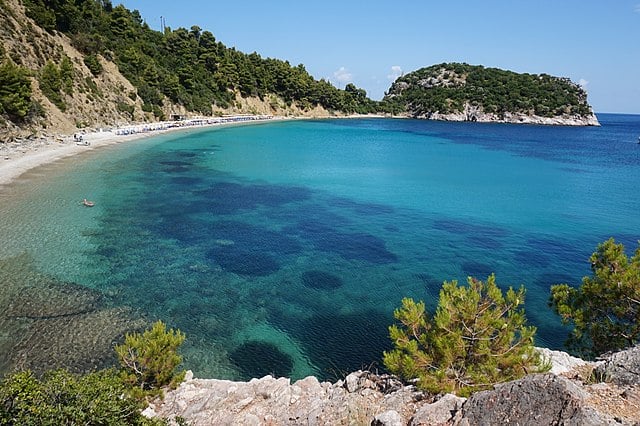

Greek seas are warming faster than normal and are experiencing higher-than-average surface temperatures in early June, according to the National Observatory of Athens.
Satellite data shows sea surface temperatures across Greece during early summer have ranged from 20 to 22 degrees Celsius (68-71 degrees Fahrenheit), notably above average for this time of the year. The Ionian Sea is currently around two degrees warmer than average while the Aegean Sea is registering temperatures of about two to three degrees (35-37 degrees Fahrenheit) above normal, Stratos Vougioukas and Kostas Lagouvardos from the Observatory’s meteorological team say.
The unusual high temperature readings are attributed to a combination of seasonal heat and the lack of strong winds, which normally help cool the water. These early summer temperatures recorded and analyzed by the National Observatory of Athens are part of a wider and worrying trend. The warming of the sea’s surface is one of the most critical indicators of global climate change, affecting marine ecosystems, tourism, and coastal communities.
Environmental organizations, such as the World Wildlife Fund (WWF), have sounded alarm bells for years on the situation in the Mediterranean, calling it an “overheating sea.”
With temperatures going up 20 percent faster than the global average and sea level rises expected to exceed one meter by 2100, the Mediterranean, WWF says, is becoming “the fastest-warming and saltiest sea of our planet.”
Long-term data shows that the average temperature of Greek seas has increased by approximately 1.5 degrees Celsius (34.7 degrees Fahrenheit) over the past thirty years. This means that the temperature has risen by 0.05 degrees Celsius (about 32 degrees Fahrenheit) per year.

Last summer, seas in Greece hit their warmest temperatures in forty years, with water temperatures exceeding 28 degrees Celsius (82 degrees Fahrenheit), according to a study conducted by three Greek universities.
Researchers at the universities of Thessaloniki, the Aegean, and Thrace studied satellite data on the temperature of Greek seas from 1982 until last year and concluded that the entire Aegean, Ionian, and Cretan Seas registered their highest temperatures of the last four decades in the summer of 2024.
The temperature rise was particularly evident in deeper waters as far down as 50 meters (165 ft) in some areas. This has been of particular concern to scientists. “This means there is a cumulative phenomenon at work,” Vasilis Kolovoyiannis, one of the researchers at the University of the Aegean’s Department of Oceanography and Marine Biosciences told the Athens News Agency.
He also added that researchers observed “changes in the usual mechanics of cooling in the Aegean, such as the inflow of cold waters from the Black Sea, which was low, and the coastal rise of colder masses.”
According to another key finding, extended marine heatwaves also played a crucial role in the rise of temperatures. While their frequency was not particularly high in the summer of 2024, the hottest ever recorded in Greece, the duration of marine heatwaves exceeded previous records, especially in the north Aegean, which lasted until August.
In an interview with Athens News Agency, Yiannis Androulidakis, another researcher and associate professor at the University of the Aegean’s Department of Oceanography and Marine Biosciences, added that their research, supported by other studies, showed a constant rise in sea temperatures in Greece every summer to the rate of 0.5 degrees per decade.
In some areas, he said, sea temperatures rose to 30 degrees Celsius (86 degrees Fahrenheit) in the summer of 2024. Temperatures are increasing at a faster rate in the North Aegean (particularly in Thessaloniki’s Thermaic Gulf), smaller areas of the Ionian Sea, and regions of the Dodecanese.
